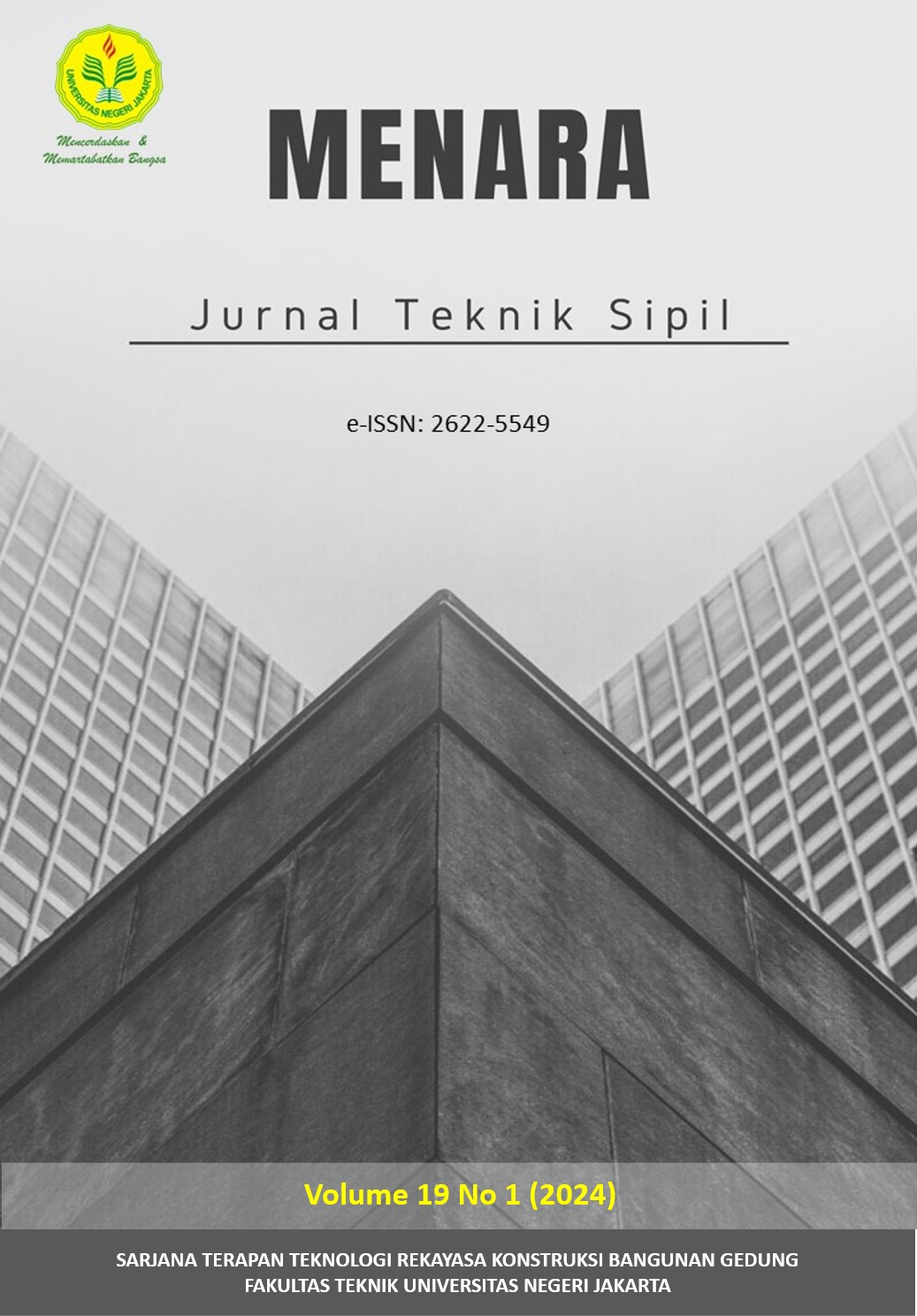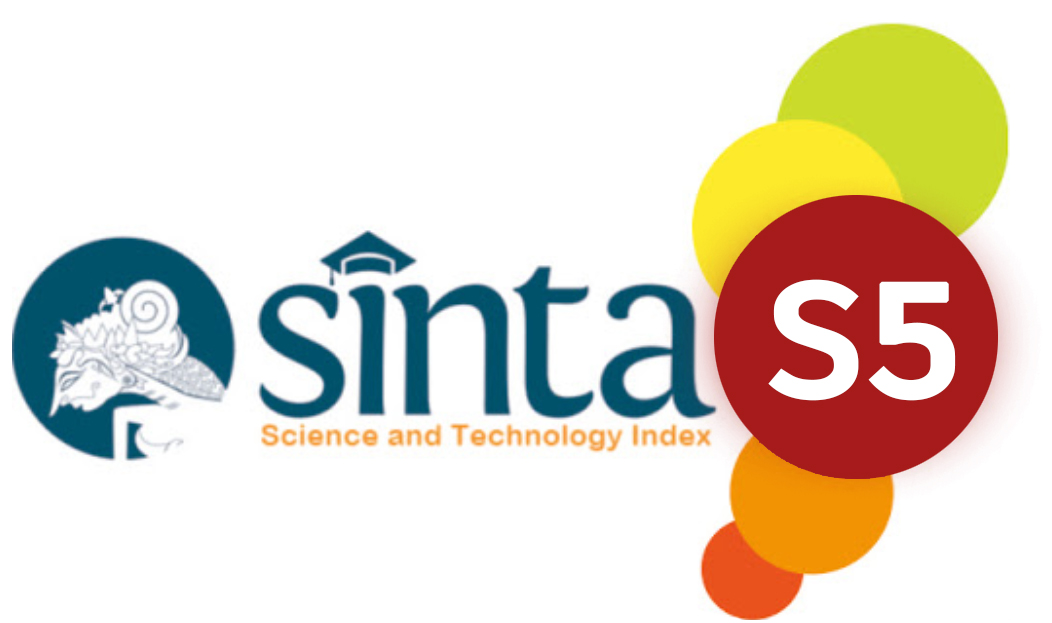COMPARISON OF MAINTENANCE OF AUTOMATIC AND CONVENTIONAL DRIP IRRIGATION SYSTEMS ON HORENSO CROPS (Greenhouse Keboenumiku Cibodas-Lembang)
Perbandingan Maintenance Metode Sistem Irigasi Tetes Otomatis Dan Metode Konvesional Pada Tanaman Bayam Jepang/Horenso
DOI:
https://doi.org/10.21009/jmenara.v19i1.38965Keywords:
Bayam Jepang, Irigasi, Irigasi Tetes Otomatis , Perbandingan MaintenanceAbstract
Drip irrigation systems are installed in drylands that can provide stable water so that water delivery is better. With the development of technology drip irrigation systems can be controlled automatically which includes electronic devices to command the state of a system. This research uses 2 methods, namely the conventional method and the automatic drip irrigation method which aims to determine the need for water and fertilizer in Japanese spinach/horenso plants and compare maintenance from cost, time and human labor. The results of the study of water released using conventional methods amounted to 29,228 liters and automatic drip irrigation method amounted to 10,000 liters. The difference of 19,228 liters with a percentage of 66.78%, it can be interpreted that the automatic drip irrigation method is more efficient. The fertilizer spent using the conventional method was 20,120 liters and the automatic drip irrigation method was 9,000. The difference of 11,120 liters with a percentage of 55.26%, it can be interpreted that the automatic drip irrigation method is more efficient. The need for water and fertilizer using the automatic drip irrigation system method is more efficient and effective because in giving it not too much is wasted than using conventional methods.
References
Ardiansah, I., Putri, H., Wibawa, A. Y., Rahmah, D. M., Teknologi, D., & Pertanian, I. (2018). Optimalisasi Ketersediaan Air Tanaman Dengan Sistem Otomasi Irigasi Tetes Berbasis Arduino Uno dan Nilai Kelembaban Tanah. 78 Ultimatics, X(2).
Fajar, A., Abdullah, S. H., & Priyati, A. (2018). Rancang Bangun dan Uji Kinerja Sistem Kontrol Fertigasi Dengan Irigasi Tetes. Jurnal Agrotek, 5(1).
Franata, R., & Tusi, A. (2014). Rancang Bangun Sistem Irigasi Tetes Otomatis Berbasis Perubahan Kadar Air Tanah Dengan Menggunakan Mikrokontroler Arduino Nano (Design of Automatic Drip Irrigati on Based on Change of Soil Water Content Using Arduino Nano Microcontroller). Jurnal Teknik Pertanian Lampung, 4(1).
Gbp Simanjuntak, P., Suwasono, Y. B., Jurusan, H., Pertanian, B., & Pertanian, F. (2018). Respon Tanaman Horenso (Spinacia Oleraceae L.) Terhadap Media Serbuk Sabut Kelapa (Cocopeat) Dan Pupuk Cair Kotoran Kelinci Response Of Horenso (Spinacia Oleraceae L.) Toward Media Coconut Coir Powder (Cocopeat) and Liquid Organic Fertilizer From Feces Rabbits. Jurnal Produksi Tanaman, 6(5), 723–728.
Sari, N. K. & Prima, G. R. (2023). Evaluasi Kebutuhan Dan Ketersediaan Air Irigasi Dalam Rangka Peningkatan Hasil Pertanian (Studi Kasus: Daerah Irigasi Cikunten II), Menara: Jurnal Teknik Sipil, 18(1).
Pratiwi, V., & Sofandi, H. (2022). Analisis Kehilangan Air Pada Saluran Irigasi Daerah Irigasi Sudi Mampir Kecamatan Rancaekek Kabupaten Bandung. Crane: Civil Engineering Research Journal, 3.
Saleh, S., Pd, S., & Pd, M. (2017). Analisis Data Kualitatif Editor: Hamzah Upu.
Sasmito, M. S. S. (2021). Sosialisasi Pembuatan Jaringan Pipa Irigasi Tetes Untuk Daerah Irigasi Lahan Kering Di Desa Tumpak Kecamatan Pujut Kabupaten Lombok Tengah, Jurnal Pepadu.
Tirta Adhiguna, R., & Rejo, D. A. (2018). Teknologi Irigasi Tetes Dalam Mengoptimalkan Efisiensi Penggunaan Air Di Lahan Pertanian.
Wijayanto, J. T. B., Sucahyo, A. & Munambar, S. (2019). Analisis Budidaya Melon Dengan Menggunakan Sistem Irigasi Tetes (Infus) di Lahan Pasir. Jurnal Teknologi, 2.
Downloads
Published
Issue
Section
License
Copyright (c) 2024 Fatwa Ibnu Isa, Vitta Pratiwi

This work is licensed under a Creative Commons Attribution-ShareAlike 4.0 International License.
Authors who publish with this Journal agree to the following terms:
- Author retain copyright and grant the journal right of first publication with the work simultaneously licensed under a creative commons attribution licensethat allow others to share the work within an acknowledgement of the work’s authorship and initial publication of this journal.
- Authors are able to enter into separate, additional contractual arrangementfor the non-exclusive distribution of the journal’s published version of the work (e.g. acknowledgement of its initial publication in this journal).
- Authors are permitted and encouraged to post their work online(e.g. in institutional repositories or on their websites) prior to and during the submission process, as it can lead to productive exchanges, as well as earlier and greater citation of published works.











